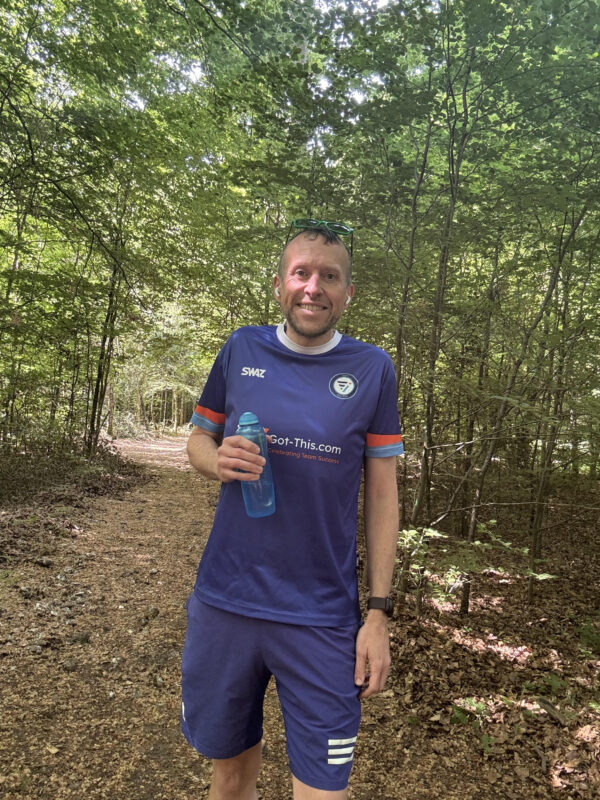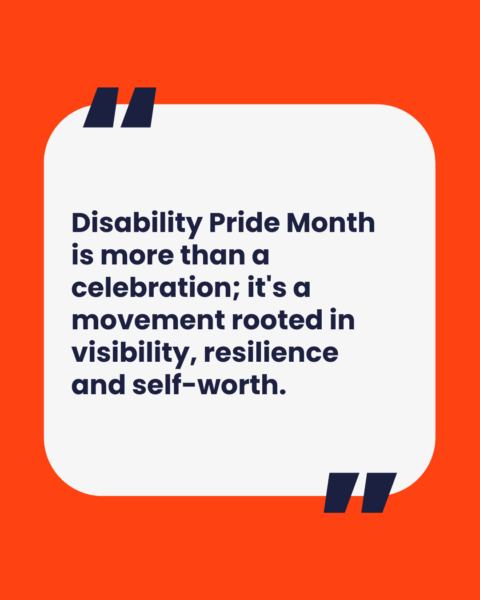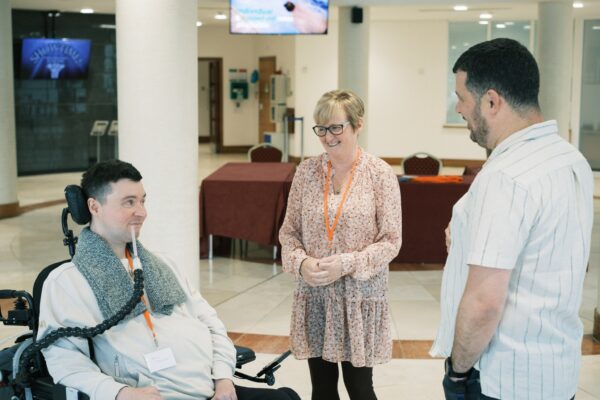Umbreen is a successful care home operator and company owner who lives with Charcot-Marie Tooth and resultant hearing loss. After recently winning the Stelios Award for Disabled Entrepreneurs, an award run by the owner of EasyJet in conjunction with the Leonard Cheshire Foundation, she reflects on what led her to this point. Having dealt with education setbacks, building a family, and creating space for disability in leadership roles, she offers advice for aspiring entrepreneurs.
My journey as a disabled entrepreneur – not the road most travelled, but one that’s mine

If you’d told me when I was younger that I’d one day win a national award for disabled entrepreneurs, I wouldn’t have believed you. Back then, I was just trying to navigate a world that wasn’t built for someone like me with Charcot-Marie-Tooth.
When I first came across the Stelios Award for Disabled Entrepreneurs, I almost scrolled past it. But something nudged me to apply. I didn’t expect anything, so it was a huge surprise to be shortlisted, interviewed by Sir Stelios himself, and ultimately awarded first prize. The recognition was deeply validating – not just professionally, but personally too. It marked how far I’ve come.
My condition impacted my education
I was diagnosed in the early 1970s. My symptoms started subtly, but my father was a GP and picked up on them early. School was tough. The buildings weren’t accessible, and as my mobility worsened, so did the barriers.
“I couldn’t join in sports or move easily between classrooms. It wasn’t intentional exclusion – the infrastructure and the awareness of inclusion just wasn’t built with me in mind.”
As I grew, I developed scoliosis. After struggling with restrictive torso braces, I persuaded my consultant to do spinal surgery – quite a progressive option at the time. Recovery meant months in a plaster cast, splitting my O-levels over two years and losing my social circle in the process.
I attempted A-levels at a boarding school, hoping for a new start, but the spread-out campus proved too challenging, and I dropped out – something that felt like a major failure then. I decided to enter employment and worked as an Administrative Assistant in an insurance company, as time passed I realised that my career progression opportunities where limited. So, I pursued a degree in business administration and psychology. I found a university based on the American-style of teaching in London that offered modular learning and final exams at the end of each semester. It was exactly what I needed. I earned a BBA degree in Business with a minor in psychology.
After graduating, I worked for a charity, then joined my family’s care home company, starting from the ground up. It was the start of a long and meaningful career in social care.
Motherhood was an unexpected, scary, amazing journey
Not long after joining the family business, I travelled to America for work and met my husband. We hadn’t planned to have children, but I fell pregnant – something that brought both joy and fear. My body struggled immensely, and recovery after childbirth was brutal. During my recovery, I was in a wheelchair for about nine months which I found incredible distressing and frustrating alongside caring for a newborn. It was overwhelming at times and we returned to the UK to be closer to family support.
I spent several years as a stay-at-home mum before rejoining the business in 2004. I gradually moved into senior leadership, eventually overseeing finance, HR, and operations. When my parents retired in 2022, I took over the running of a part of the company entirely.
Being a disabled CEO
“One of the things I’ve carried from my personal experience into our care home is that accessibility doesn’t have to mean cold and clinical.”
When I refurbished and designed my own home, I wanted it to feel like just that – a home. Not a “disabled person’s house.” While I added a lift, I avoided obvious features like handrails. Instead, I used thoughtful, subtle design that worked for me and looked like any other stylish space.
As my disability progressed, I came to rely more on staff to keep me informed. I couldn’t always be physically present, but I built strong relationships and stayed closely connected. COVID-19 changed a lot of things, and the shift to online meetings was a game-changer. It made my working life far more accessible and sustainable particularly as my mobility deteriorated.
What still frustrates me is how often policy and practice don’t align. At a recent conference, my hotel room was accessible, but the venue didn’t have a proper passenger lift.
“I had to use a dirty service lift tucked away behind the scenes. The staff were apologetic, but I found myself reassuring them, absorbing their discomfort so they wouldn’t feel bad.”
Meanwhile, I was just trying to do what everyone else was doing: network, learn, connect.
Inclusion isn’t just about having policies or training in place. It’s about listening to lived experience and putting it into action. Real change happens in the details.
I am using my lived experience for the next stage of growing my company as I design a new 70 bed care home offering not only excellent care but a beautiful therapeutic homely environment for residents. The kind of environment that I would be happy to call home.
For anyone facing doubt
To anyone with a disability who feels uncertain about their future, I see you. I’ve been there.
“My advice is simple but hard-earned: ask for help; it’s not weakness, it’s wisdom. Build a team you trust – you don’t have to know everything, but you do need people in your corner who see your value. Pace yourself, protect your energy, and do the things that restore you.”
Most importantly, don’t write yourself off too soon. Your disability may shape your story, but it doesn’t have to define your limits.
I’m more than happy for anyone who has questions about being a disabled entrepreneur to reach out via my website or LinkedIn.


